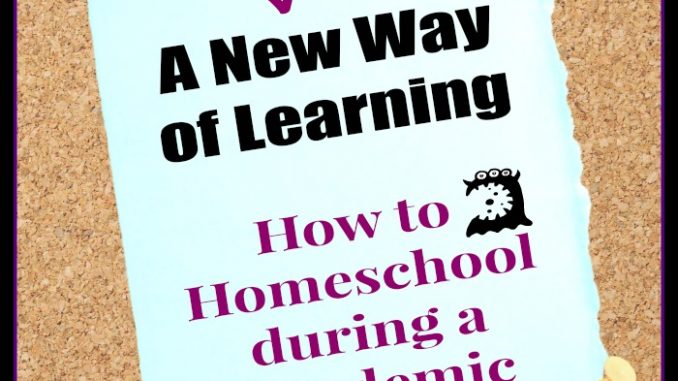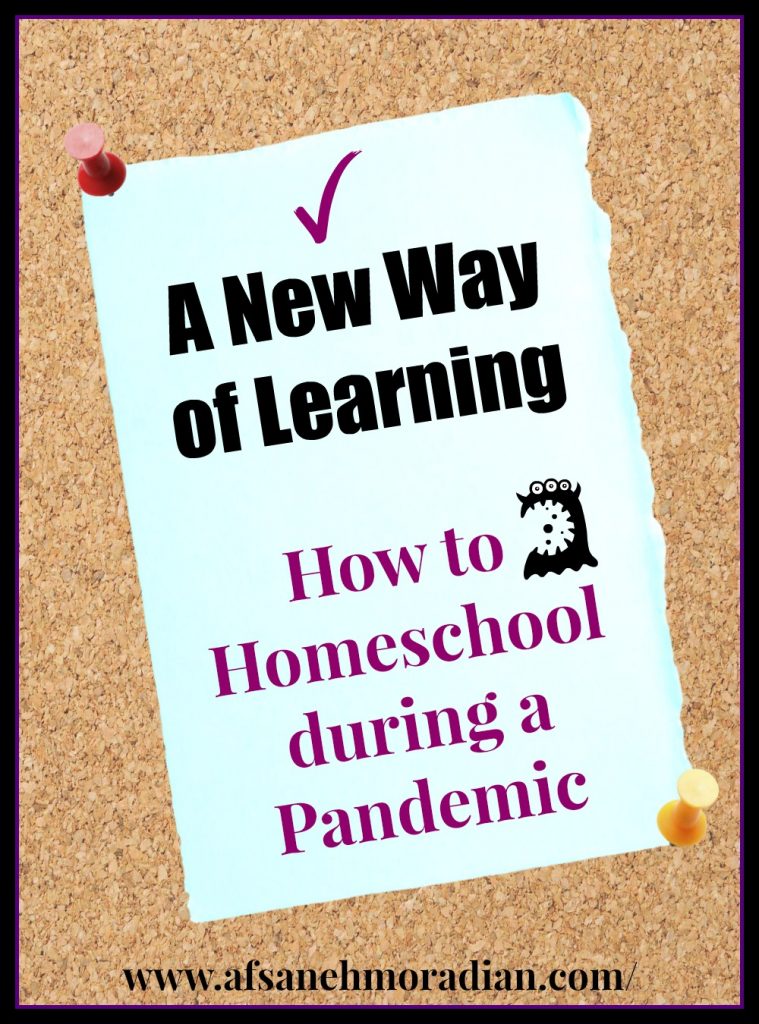
There is a lot is being shared on social media about the challenges parents are facing trying to work from home and support their children in the new shift to online learning. This setup is unimaginably challenging and isn’t designed for success.
While many moms are pushed into being superheroes, it’s exhausting and unsustainable. Working, helping kids with school work, food prep several times a day, dishes, laundry, keeping the house clean, any kind of self-care possible these days.
I’d like to offer some strategies to relieve some of the homeschooling stress.
How to Homeschool During a Pandemic
There’s been a lot of talk on my feed about teachers having very high expectations of what their students are doing every day. First, if this work isn’t graded please be prepared to give your kids a break and understand that learning happens in so many different ways, it doesn’t have to be all worksheets, timed silent reading, and comprehension questions.
There are also parents who are relying heavily on screens to help them get through the day. There’s no judgment here. I’m not anti-screens and I don’t know what I would do if I had to conduct live meetings in one room, with small humans in the other, and zero childcare options. I’ve certainly given permission to watch an episode or two while I’m on a call for work or having to do urgent work. You’ve got to do what you’ve got to do.
We may not be home for a few weeks. We may find ourselves in this position for the rest of the school year. So here are some important things to keep in mind to hopefully help you stay sane.
Adjusting Your Routine | Homeschooling During a Pandemic
- If you have any other adults in your house please create a schedule with them so that the kids are engaged with other people and not only screens.
- The learning style your kids are doing with their teachers via the computer is not homeschooling. This is the classroom model being adapted to your living room. We need to stop calling this homeschooling.
- Kids learn through a variety of ways, many that we cannot see or measure. K-5 students do not need more than 1-2 hours of learning a day.
- It isn’t your job to recreate school at home (English from 9 am-10 am, Math from 10 am-11 am, 11 am Snack, 11:30 am Science, etc,). While this may be your only conception of school, this model exists to manage hundreds of children in one building. That is not the situation right now. Be open to the idea of a looser (yet effective) school day that isn’t strict, rigid, or grueling.
I’d like to help take some of the pressure off. It is daunting to think that you are responsible for your child’s education right now. However, you’re not. Your job is to facilitate learning, not micromanage it.
Reading is the Cornerstone of Learning 365 Days a Year
Reading with your kids creates an awesome foundation for learning. Here are some examples:

- Choose a picture book or chapter book (fiction or non-fiction) and stop and ask questions. Sure, ask questions about what is happening, but also about what they think, what they would do in that situation, about the illustrations (how do you think that person feels by looking at them, what do you think will happen next, what would you do in that situation, does this remind you of something else, etc.) Ask, ask, ask. This makes the child engage with the text while feeling connected to you (snuggle on the couch when you read or sit outside if you can. Nothing needs to be written down).
- If you have a younger child who is learning to read or is a reluctant reader, take turns with the reading. Take turns reading paragraphs, or have them read the dialogue for a specific character or some textbooks for non-fiction books. Please be flexible and try to make it as fun as possible. Forcing kids to read has never created a love of reading.
- Older kids love to hear picture books read out loud. If possible, let them choose which book to start with. One of my favorite things to do is read to my kid while she’s eating or creating art. Often she’s doing something else while I’m reading (such as drawing or building) and she’s paying complete attention to the story.
- If the book is related to science or social studies, you’ve just incorporated those subjects into your learning that day.
Have your kids respond to the reading in an organic way. If the story is about monsters, have them create their own monster!

If it’s about family, have them draw their family or make a family tree, create a family poster with photos and adjectives for each member, fill out a questionnaire with serious and fun facts about each person (gets angry when….., afraid of…., most annoyed by…., favorite food…., favorite song to sing in the shower…., etc.).
Have your child change the ending of the story or an important part of the story (either through drawing, writing, writing and illustrating, comic book form, acting, writing the script then acting, etc.) Your child is writing, producing, creating, planning, reading. Lots of skills are being developed through one activity that is creative, open-ended, engaging and most importantly….. fun!
Allow older kids who can work independently to choose a topic to research and work with your child to think of a project they’d like to do once they have their research. Decide how many days they need to research and take notes and then how many days to work on the project itself.
While older kids can read independently, it’d be so much better for everyone if you form a family book club (even if it’s with two people). Don’t wait until the book is finished to discuss, assign pages and make that part of dinner or after-dinner discussion. If you have other people in your life who are isolated, bring them into the book talk via video chat. (There are endless resources for free books these days!)
Please don’t get hung up on structure. Scheduling is really important, but the schedule needs to look different from the “normal” school day because there is nothing normal about this for your kids. Schedule in learning time, and learning activities that foster physical movement (such as sight word hopscotch or post numbers around a space and ask addition/subtraction/multiplication/division questions to see who is the first to reach the correct answer)
Look for as many ways as possible to combine academics with art/creative expression and physical activity. It’s not mentally or physically healthy for any of us to sit around all day. Even in a small apartment, the floor can suddenly become lava…..
We all need support these days. Snuggling and reading to our kids, then watching them busily engaged in a project for a period of time will provide some needed relief from the stress of kids learning at home.
Hang in there! We are all in this together!

And on another note, I’m the author of the picture book, Jamie is Jamie: A Book About Being Yourself and Playing Your Way.
Through color-coding in stores, kids “learn” which toys are “supposed” to be for girls or boy. Pink and yellow toys are considered “girly” and anything blue or dark green is obviously for boys, right? What about the toys themselves? Can boys play with dolls and girls play with trucks?
Of course, they can! And that’s the open-minded thinking that is captured in my children’s picture book, Jamie is Jamie.
I wrote Jamie is Jamie for my daughter who’d been told that only boys can play a superhero. My daughter and every other child deserve a book that gives them permission to be free to play and explore their own way-not the way everyone “thinks they should.”
I created my book to challenge gender stereotypes and encourage children to make play choices based on their interests. And because playing is fundamental to learning, I’ve created a special section in Jamie is Jamie for teachers, parents, and caregivers where they can find tips on how to make kids’ playtime learning time.
Get the scoop on Jamie is Jamie on Amazon or FreeSpiritPress.com

Afsaneh has been teaching for over 15 years from preschool to graduate school, and is often invited to give teacher training workshops and speak at educational conferences. Her vast experience in working with different ages, academic levels, and cultures has given her the ability to work with anyone and help them achieve their learning goals. She is also the author of Jamie is Jamie.


Thank you so much for this advice! I really needed it right now.
I’m so glad you found it helpful! Hope all is well!
This is fantastic!!!